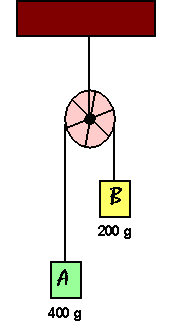
Teaching Physics with the Physics Suite
Home | Action Research Kit| Sample Problems | Resources | Product Information
Problems Sorted by Type | Problems Sorted by Subject | Problems Sorted by Chapter in UP
 |
Teaching Physics with the Physics Suite
Home | Action Research Kit| Sample Problems | Resources | Product Information |
Problems Sorted by Type | Problems Sorted by Subject | Problems Sorted by Chapter in UP |
| In the figure at the right is shown an Atwood's machine with two unequal masses attached by a massless string. The pulley has a mass of 20 g and a radius of 2 cm.
|
 |
Not finding what you wanted? Check the Site Map for more information.
Page last modified October 30, 2002: R20